The Indulgence Show is a veritable feast of aural delights, so leave it to me to spend a substantial part of my time talking to people about wires, probably the most controversial topic in HeadFi. Amidst £100,000 speaker setups and £50,000 headphone setups, I decided to spend my time talking to people about the how, when, and why of cable manufacturing. I wanted to know what is important in wires from the people who make them. I didn’t ask about price. Even though I’ve heard the difference that cables can make, I’m not about to say that the prices charged are easy to justify. I recognise that cable price has more to do with prestige than it does with component or research and development (R & D) cost. This is not to say that cable manufacturers don’t spend on R & D. They do, but we’ll get into that later. First, we’ll start with some background.
Background
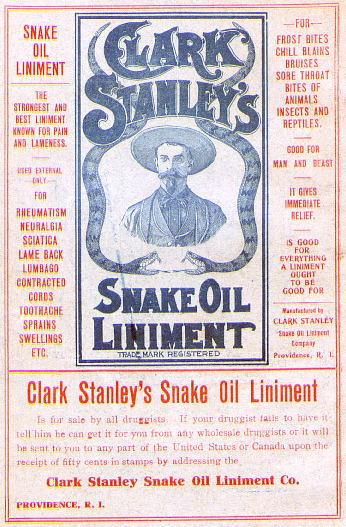
Snake oil! Charlatans! Robbers! Frauds!
Those are just a few accusations I’ve seen bandied about the internet and hurled at cable manufacturers and those who’ve listened to cables and heard a difference or thought they’ve heard a difference. I’ve personally had my integrity and intelligence questioned. I’ve been accused of being a shill. I’ve had my observations refuted with evidence-less statements by people who feign to be scientists. I volume match, I list my methods, I try to allow people to recreate my observations as best as I can, and acknowledge the limitations of my observations.
Folks like Ethan Winer (a real scientist) hold up ABX and similar methods as the template for audio science, but Ethan doesn’t know a thing about headphones from all I can tell. You should watch the video, but there are significant flaws in the methodology of the listening tests in Ethan’s portion, feel free to identify them over on YouTube. ABX may work for speakers and source devices, it doesn’t work at all for headphones, IEMs or headphone and IEM cables where any physical properties are different. Different headphone and IEM cables have different weights, so even removing sight from the test will not remove potential bias. Sean Olive has done experiments attempting to control for this on headphones, but they aren’t perfect either as a simulated headphone won’t completely replace the acoustics of the real headphone (go read the link, it’s really good). Sean Olive also has millions in research funding and lab equipment to do his experiments, it isn’t reasonable to ask someone outside of industry to do the same.
There can also be physical properties that change the sound of a headphone but have barely any effect on measurements—I think this is what defines the realm of the possible when it comes to things that shouldn’t make a difference like cables. When Axel Grell (top engineer at Sennheiser) was asked about the difference between the HD600 and HD650, he said they measure essentially the same, but have differences in sound that anyone can hear that are due to differences in the cups—you actually could do a blind test with the HD650 and HD600, all you would have to do is own both and buy an additional HD600 or HD650 yoke (they are interchangeable). Sometimes measurements don’t tell the whole story. It is also the case that how measurements are done and presented can be intentionally or unintentionally misleading (see the Ethan Winer video linked above), or there is the possibility that one set of measurements, or one suite of measurements don’t tell you everything that simply listening with a trained ear can. Here is an article that quotes speaker designer Roy Johnson of GMA about the latter.
There has also been no explanation offered for how to control for the brain’s natural tendency to fill in details through pattern recognition. For example, how we don’t notice typos and can read sentences where the words are jumbled. We do similar things with audio. Therefore, in a blinded audio test cognitive dissonance is a substantial possibility. This could be one explanation for why people frequently do worse than random chance in ABX tests about Hi Res versus lower resolution (actual science article)—the counter arguments are that this effect could be a small sample size artefact or random variation. There may be no grail, and all the observations of reviewers may be unreliable. I would argue that the only way for observations to be confirmed is to have many people duplicate methods whilst blinded to the results of other participants’ listening tests, which is extremely hard to do as it would require coordinated, most likely funded, research. I proposed a controlled experiment on a review tour once: same headphones, same tracks, same source same volume, but it wasn’t feasible or popular. I’d still like to do that experiment.
When I saw that Nordost, Atlas, Supra, Wire on Wire, and Kimber Cable were going to be at Indulgence, I decided that I was going to tread into the danger zone once again, and see what cable manufacturers had to say for themselves. I wanted to see if they gave reasonable explanations, if they had any science to show, and I wanted to see if any consistent narratives emerged from my questions on what is important in cables.
My cable experience
Here’s a bit about my cable experiences. If you’ve watched Ethan Winer’s video, linked above, then you know the caveats. I’ve thought I’ve heard improvements from upgrading my USB cable with the LH Labs Geek Out 1000 from the crappy included cable (bad soldering, position dependent connection, likely did have sonic flaws) to a Supra USB 2.0 cable (good build quality). I heard a clearer background when I upgraded to LH Labs Light Speed 2G split power and signal USB cable. I didn’t do any of those tests volume matched or blinded, as I was just starting out. My observations could just as easily be placebo effect as real effect. I haven’t done follow up experiments. I then won the iFi Micro iUSB3.0, and when I reviewed it I heard plain improvements in the time domain (imaging, attack, decay) and in the clarity of the background when using my LH Labs Geek Out V2. After some more time and a little bit of introduction to the scientific principles of volume matching, I decided to check whether there were differences in volume levels when I reviewed the iFi iPurifier2. I performed several volume matching trials to try to establish that the perceived differences in loudness I was hearing were due to the lowering of noise floor rather than an increase in SPL, and I successfully demonstrated that there were no differences in SPL. I included the iUSB3.0 in those SPL trials. I have tested my wife with blinding on a Mains Cables R Us generic shielded power cable and with the iUSB3.0/Geek Out V2 combo, and she heard differences without me telling her anything about what I thought I heard, she described the same features I did without prompt. As when I’m writing a review I’m a one man shop, this was as good evidence as I could do. Blinding requires having help, lots of time, and money to duplicate setups to reduce switching time. I don’t have any of those things, so please stop asking. I’m only one man.
These experiences told me that USB cables do make a difference, and USB clean-up does make a difference. I then did volume matched testing in my Questyle CMA600i review process to try and establish whether the iUSB3.0 did anything over my LH Labs double ended cables. I couldn’t hear a difference with volume matching done as carefully as one without a professional measurement setup can do. So my raggedy evidence to me on USB has generated the hypothesis that USB cleanup doesn’t scale if you separate out the main flaw of the USB cable design, power noise contaminating the signal line. It appears that there is a boost that can happen, but that it is more likely to happen in lower end systems than higher end systems, which is contrary to the pricing of USB paraphernalia and contrary to the claims of manufacturers. I don’t have strong evidence, and there is lots of potential for bias, but when I can’t confirm what I’m hearing with equipment or top quality evidence, as most people can’t, I have to rely on my ears, and I wish people would stop wading into audiophilia and telling people not to trust their ears. Most people will think you are a rude jerk for doing that. I’ll trust my ears, thank you much, but acknowledge limitations. There are lots of limitations to my observations, I’m open to constructive criticism, but abuse isn’t warranted.
With regards to headphone cables, I’ve heard the difference between Noble’s stock cable and the Effect Audio Ares II+ when I did volume matched comparisons in my review. The caveat there was that switching cables requires time—I need another Noble Encore to really do the tests properly, anyone got £1700 to give me? I also heard clear differences between cables in Effect Audio’s lineup when I had a listen at CanJam London 2017. In both of those instances the Noble Encore was the IEM. If you can’t pick out the Lionheart from their other cables by sound, I think you may have hearing damage, so stop wasting money on cables. Eric of Effect Audio is confident that the differences in their cables would be picked up in ABX testing. I believe it, and am encouraging him to actually set this up. The difference in tone is quite striking. Try their cables out the next time you have an opportunity. Right now I’m compiling a group of cables for a cable shootout with all sorts of different materials. I intend to investigate cables to the full extent that I’m capable. With that in mind, lets talk about the cable manufacturers I talked with at the show.
Conversations with companies
Atlas Cables
The bottom floor of the Indulgence Show was a space pre-occupied with all the things that make us feel cosy: booze, neck massages, the warm analogue seduction of vinyl (three vinyl sales stands), jams & jellies (Bantamlady), cushions produced in extremely limited supply (Unique Designs), refreshments (Ely’s Gin, Rosemary Water, the bar), and live music (buskers and a big stage). But among all these elements was the first place that caught my eye: Atlas Cables.
Full disclosure, I like Atlas Cables. The ones I’ve gone for are inexpensive, well built, and I think that I’ve heard differences between their cables versus Van Den Hul cables and Audioquest cables (no volume-matched comparisons, no reasonable number of trials, so big caveat alert). I’ve got Atlas Element Integra RCA interconnects running right now with my DAC and headphone amp setups, and I think they sound clearer and more focused in the treble than the Van Den Hul and Audioquest Forest cables I have, some would say they are sharp. I’ve also been borrowing an Atlas Zeno 1:2 (£215) that I’m using with the HiFiMAN Susvara. The cable is sturdy and to my ear sounds a little better than the stock cable (could be hearing with my eyes, difference is subtle).
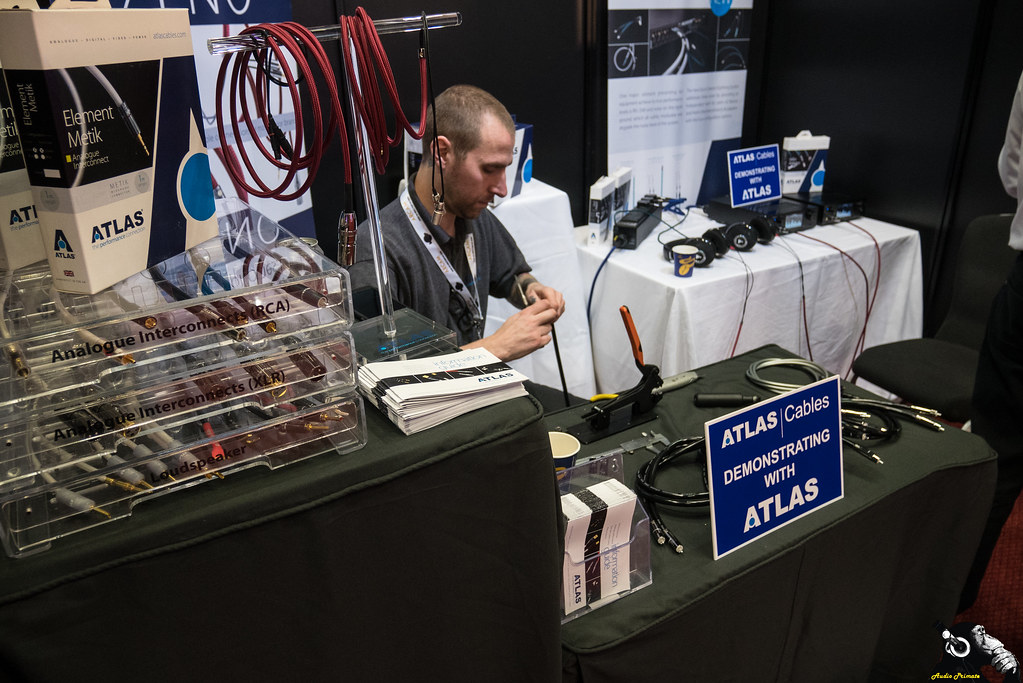
I met Ryan McFarland, which made me think of Family Guy (Seth MacFarlane), and then Spawn (Todd McFarlane), but Ryan called himself ‘The Cable Guy’. Ryan is a cable surgeon and master builder at Atlas, with an official title of Engineering Technician. I watched him building the ends of cables and had a look at the construction.


Pretty cool.
Not as flattering.

I asked Ryan what the most important elements in cables were, these were his answers:
-
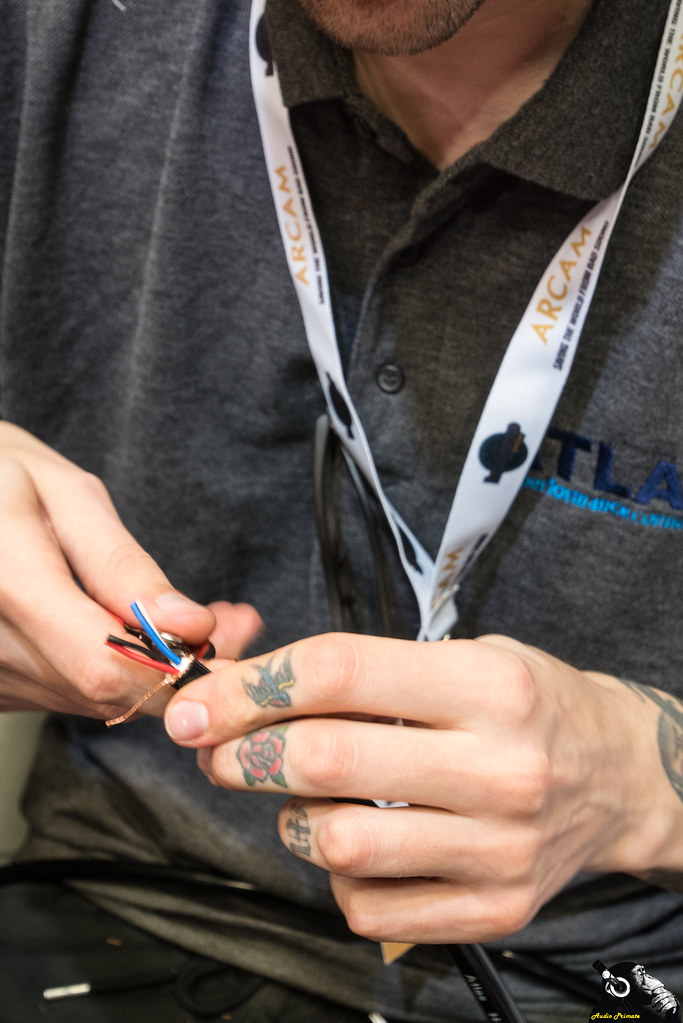 Materials: this includes conductor, dielectric, and shielding. Atlas uses OCC copper for the conductor, PTFE and polyfibre for dielectric. I didn’t ask about the shielding.
Materials: this includes conductor, dielectric, and shielding. Atlas uses OCC copper for the conductor, PTFE and polyfibre for dielectric. I didn’t ask about the shielding.- Production technique: Atlas uses solder-less joints that are press fitted with a copper paste to increase the conductivity of the joint compared to solder and eliminate air. They use what they call micro porous PTFE, with polyfibre around the wires in order to make most of the dielectric consist of air (the best dielectric)
- Consistency: speaks for itself. Atlas cables shouldn’t have a poor connection like the solder joint on my LH labs throw-in USB cable that came with the Geek Out 1000.
I also got to have a look at the inside of the cable. It doesn’t look like rocket science on the inside of the cable. I think a lot of the value for Atlas is that they are made in Scotland and to consistent quality standards with consistent results. If and when I start making some cables, my results are unlikely to be as consistent.
In addition to telling me what their principles were, Atlas gave me a technical/sales manual about their cable construction. The principles stated there were basically the same as above:
- Very pure metal conductors. They pointed to a physics paper by Nakane et al (Nakane, Watanabe et al.), but they did not give a proper reference, so I have not been able to find it with any certainty and everything from the authors is behind paywalls, so I can’t confirm the claim that “electrons flow more easily through a uniform crystalline structure.” This article appears to be the one they are referring to. This would relate to their claims on the importance of speed in cables.
- Importance of insulator or dielectric (essentially more air = better)
- Connector design: crimped copper to copper rather than soldered (solder isn’t a good conductor)
- Shielding: multiple layers and types of shielding (braid and foil) to control for RFI and EMI. Braid is good for connecting to the ground, foil isn’t, so both are needed to have complete shielding. They use a term called transfer impedance to explain what interference does to low frequencies. Better shielding means better transfer impedance which means better low-end.
- In digital cables, everything revolves around time. Twisted pairs can have signal out of time that our brain and the receiving computer end has to resolve. Digital transmission is in discrete time, which means that only one attempt at correct transmission and receipt can happen; bandwidth is important for ensuring information has the best chance of getting through error-free. Skin effect causes delays in the transmission of high frequency information as resistance is higher at the furthest point from the center of the cable. Atlas uses silver plating to increase speed at the edge of the cable, but only in digital cables. They find silver plated copper artificial sounding in analog cables.
Atlas Cables range in price from the inexpensive Atlas Portable Audio (3M) interconnect at £35 to the Atlas Asimi Ultra (1M) interconnect at £3075. There’s a price for everyone, especially if you’re flush with cash.
I followed up with an email to Kevin Kelly, Managing Director at Atlas and one of their engineers, and he pointed me to some more useful information. Atlas’s philosophy is to be able to document their performance results with an explanation of what the measurements mean and the methods they used to attain the results. As would be expected, they argue for the audibility of their methods, which is something you’ll have to test, preferably blind, to find out whether the measurable differences they show are audible. Their act doesn’t look like smoke & mirrors. In that light, Kevin pointed me to Atlas’s technical page: https://www.atlascables.com/design-insulation.html. You can find technical papers about their line-up in general, power management (distribution blocks and mains cables), and their top of the line tech that goes into Asimi cables. Atlas has eight product ranges: six for interconnects (in order of expense: Element, Equator, Hyper, Ascent, Mavros, Asimi), one line of power cables (EOS), and the Zeno line of headphone cables. Here is a quote from Kevin about Atlas:
…we differentiate all our products ranges simply by engineering and material science, we don’t have any magic dust and don’t have the skill to draft a fancy marketing line that explains what musicality each cable will deliver – we simply engineer every cable to be different and when it sounds different we generally can explain why. So this makes us a little bit different from many of our competitors.
Metaxas
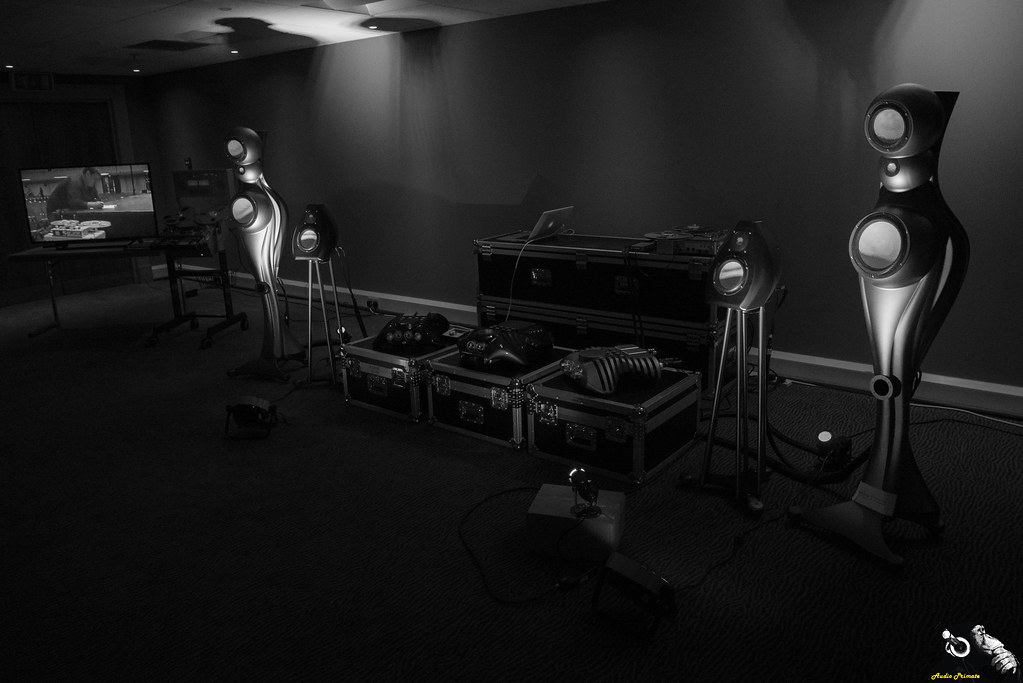
Kostas Metaxas is not a cable manufacturer, but he did have the best sounding room, and he made the cables that ran between his Ikarus amp and Siren speakers. I talked with Kostas about many things, to be covered in a later installment, here I’ll recount what he said about his wires:
- He uses a heavy duty steel shield made of spiral metal (think cable organisers inside computers)
- He has a Zobel network at both the input and output. The purpose of this is to stop reflections and time smearing
- Conductor of high speed (GHz) copper
So the most important elements in his cable seemed to be super shielding, and attenuation at the ends from the Zobels. High speed copper, seems to be the material most often used in wire manufacture.
Supra Cables
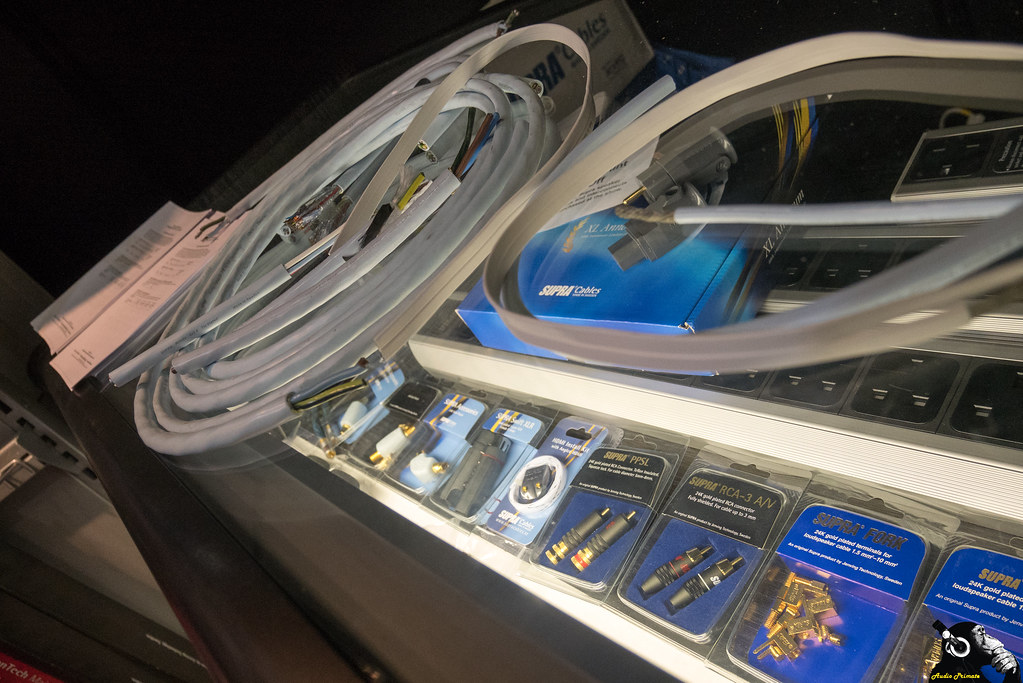
I did ask the Supra representative about metal materials. This is what he said: crystal structure affects harmonics. All metals sound different, irrespective of conductance because they have different crystal structures.
The Supra representative (I’m a bastard for not getting his name) told me about how their wires are made in Sweden:
- An ingot of metal is pulled through progressively smaller and smaller holes until final wire size is acheived
- The shield is then braided mechanically
- Braided cable is then fed through an extruder to melt casing on
Supra emphasized that the most important elements in a cable were the following:
- Shielding
- Conductivity
- Consistency
Supra cables are used by government contractors throughout Europe, including military contractors and have probably the best pricing of any high end cable manufacturer. Their USB cables are well made and inexpensive. My first USB upgrade was a Supra cable that I bought on Amazon.co.uk on sale for £18, down from £27.
Much like Atlas, in their best models Supra does not solder, instead they crimp cables for ideal metal on metal contact. Additionally, their most ‘high end’ cable, called the Sword, uses enameled strands (also known as Litz wire) in a unique geometry.
Supra is a bargain manufacturer as cable manufacturers go. They have speaker cables with prices as low as £2 per metre, with their top of the line interconnects topping out at around £580 for a Sword speaker cable pair.
Vertere Acoustics
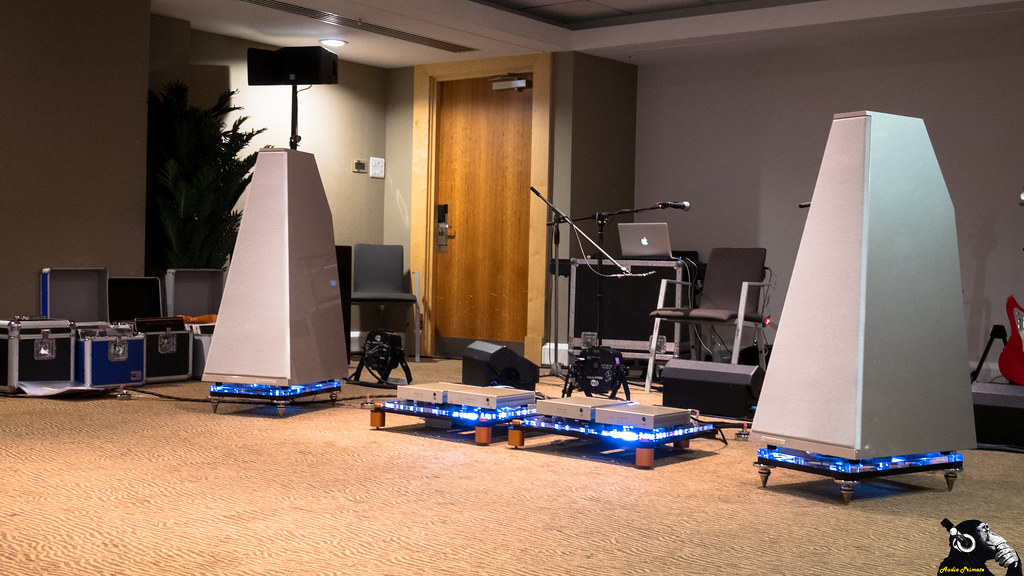
Hidden in the back of the Mezzanine floor was a cave of wonders. The room had two giant FM Acoustics speakers (in another installment). A ton of FM Acoustics equipment to make vinyl sound amazing, a Vertere Acoustics turntable, and Vertere Acoustics wires throughout. I had no expectation to find someone who was making wires in a back corner away from all the other wire manufacturers. The room was right up there in sonic performance with the Metaxas room. The proprietor of Vertere Acoustics, Touraj Moghaddam, had an entirely different perspective than every other cable manufacturer I consulted.
Touraj sees cables as the weakest link in many systems. He spent years working on his cable geometry and the combination of wires, but initially his geometry could only be built by hand with substantial human capital. Then he found a manufacturer who could build his cables to his specification, which significantly opened up his market and has allowed some trickle down technology.
Like with the other manufacturers, I tried to figure out what he thought the most important characteristics were. I told him what others had said, shielding and materials, primarily. He told me a few things before telling me his priorities for cable manufacture. Shielding is not the most important factor. A cable is not a pipe, it is a medium transmitting a wave. Not all conductors want to conduct all frequencies at the same amplitude, which means that you need multiple diameters and geometries to ensure even impedance across the cable length. He gave me a slightly different set of priorities for his cable design:
- Geometry (uses variable diameter wire arranged in varying twist patterns)
- Plating (uses tin or silver), thickness of plating is important
- Dielectric, uses PTFE (has bad microphonics) or PVC (not a good dielectric). Compromises based on needs of application.
- Grounding and shield need to be separate
- Dielectric needs consistent width/shape/geometry
The first and last point were why all his cables had to be made by hand at first.
Touraj also imparted some interesting insights. He believes that the most relevant upgrade a person can make in a digital audio chain (that’s most of us) is a better USB cable. He advised me that upgrading components closest to the source is the most important thing you can do, as this is where the most loss of fidelity can occur. I take this to mean that people should upgrade their USB, power cords, and interconnects first. Speaker and headphone cables are lower priority. He said people will experience a noticeable upgrade from his £85 USB cable.
I had a listen to the Vertere Acoustics Pulse HB (for hand-built) headphone cable with the Audeze LCD3 playing from the Benchmark DAC2 connected to source with a Pulse DFi USB Cable. The sound was warm, with a tall image. I listened to Roger Waters – The Ballad of Bill Hubbard. The system did an excellent job conveying the visceral fierce growl of the jaguar. The stage had fantastic depth and clarity, with the story-teller’s voice sounding as good as any listen I’ve had to the song. Unfortunately, I have little experience with the LCD3, and even less with the Benchmark DAC2, so I can’t control for anything at all—shows aren’t the place for critical listening. At a show, you are either impressed or not. I was impressed. The DAC and headphone could be responsible for all of that sonic goodness, though.
Vertere Acoustics cables vary from humbly priced DFi cables all the way up to £1000+ per metre Pulse HB cables.
Nordost Cables
I really wanted to hear what Nordost had to say about cable manufacturing, but I didn’t get any information from them on what are the most important cable elements at the show. The representative told me that Joe Reynolds had basically already answered all my questions in an interview with HiFi+, which was true, but didn’t give me a morsel to gnaw on in the meantime. They did give me an aroma of what was important, but for a taste, I had to look up the interview later. They identified power as being the most important element and advised a £1200 distribution block would be the best initial investment followed by Blue Heaven power cables (£160 each). After that it was off to the races with mechanical vibration control with devices called Sort kones and how they are carefully matched to the area of equipment they are placed under, which while interesting didn’t really answer my question. I’m also not sure that I buy that a DAC power supply vibrates more than speakers do, which have far less elements to their vibration control designed into their case than the cones I was shown at the show that were for putting under your DAC and amplifier. I’d love to have a blinded demonstration of the difference, but that would be pretty hard to execute, as the cones would have to be replaced with exceptional speed—think fully crewed Ferrari pit stop.
To summarise the Joe Reynolds interview in HiFi+ with regards to what is important in a cable:
- Mechanical construction (materials used cause more air in the dielectric). The article mentions Micro Mono-Filament and Dual Mono-Filament construction, which are essentially air tubes put inside the wire to add more dielectric effect. I’m not sure the effect should theoretically be much different than having polyester fibres wrapped around the wire cores in Atlas Cables (which are far less expensive).
- Geometry
- Manufacturing precision
Joe Reynolds said that the power cable is most important, specifically the power cable that leads to your power distribution block. Interconnects, and speaker cables followed in ranking of most important cables. Go read the full article. Joe gives a good explanation of why digital matters: ones and zeros are actually a square wave, variation from perfect leads to timing errors. This makes intuitive sense to me, but intuitive doesn’t always mean correct. Conspiracy theories are all founded on sounding intuitively reasonable. To be absolutely clear, I’m not saying cables are a conspiracy theory, just that I don’t have any strong evidence on how and why they work or don’t work.
Nordost cables range from “dinner and a movie” £159.99 for 1M White Lightning interconnects to “curse words and accusations” £18,999 for a 1M Odin 2 Supreme Reference pair of interconnects. Prices go higher for power cables, which they recommend doing your whole system in, and increase to “Harvey Weinstein in a bath robe” £24,999 for a pair of 1M Odin 2 Supreme Reference speaker wires—how much do you need your kidneys? I just can’t imagine spending that much to hook up a pair of speakers in the same way I just can’t imagine volunteering to marathon watch Twilight movies with my toddler. If one were to hook up the whole of the Metaxas setup with Odin 2 wires as Nordost would probably recommend, the wires would cost nearly as much as the £80,000 pair of Siren speakers that took eight weeks to sculpt with a CNC machine and the £25,000 Ikarus amplifier that drove them. That makes no damn sense.
Wire on Wire
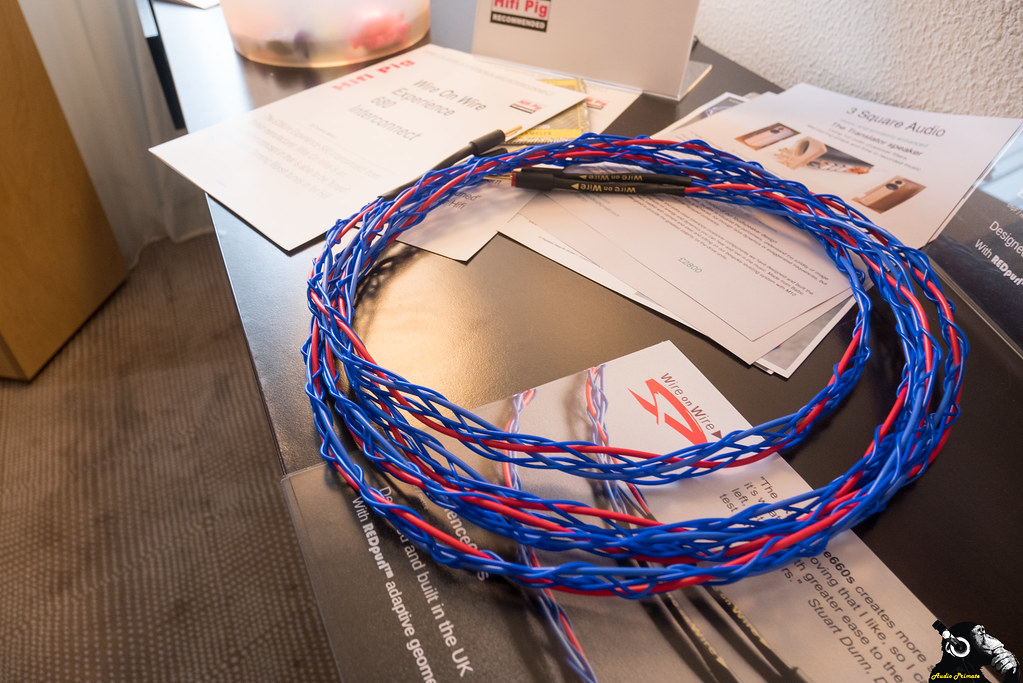
I’ll be honest, I went to Wire on Wire room because there was a prize there, which I ended up winning (the £448 Experience680 interconnect). I now have some wild looking cables in my system with an interesting trick. Wire on Wire cables are tuneable by changing geometry. Geometry is changeable by inserting spacers in parts of the unique cable geometry. I went to the room and watched a demonstration with instantaneous switching between three tunings using a switch box, and the differences were audible. Essentially, I found that as spacers increased, treble was decreased, which has the ancillary effect of making the mids more prominent and giving an impression of greater fullness.

Obviously, Wire on Wire thinks geometry is very important, but they also are particular about their material. They use silver plated copper wire. They refer to their geometry as RedPurl, and it uses different diameter wires, which is a feature of Vertere cables, and also some cables from Effect Audio, including my Aries II+.
Conclusions?
So to sum it up, cable manufacturers think the following are important:
- Materials, especially the conductors and the dielectric
- Shielding
- Geometry
- Manufacturing quality
My conclusion would be that you should try to find cables that have two types of shielding: braid and foil for complete coverage and for energy transfer to the ground; cables should be twisted with an even twist (braiding would also work); and high purity copper conductors are generally considered best, though two manufacturers advocated tin plating, and three use silver plating (Atlas only for digital). Of all the manufacturers I spoke to, Atlas Cables and Vertere Acoustics were the most helpful. If I’m going out and buying a cable today, Atlas has the most documentation of their engineering, and Supra has the best price; Vertere falls in between. Nordost Blue Heaven power cables seem to be priced okay, but their top tier stuff is ridiculously priced.
I hope my little sojourn has been useful. Bring on the constructive criticism and likely abuse. The floor is yours.



Micah, an anecdote from Louis Motek (LessLoss) in conversation with Srajan Ebaen (6moons) about their new analogue cable…
* I learnt from one manufacturer how by committing to 10km, they procured Chinese bulk cable at €1/m to their precise specs. This represented a €10’000 investment plus the necessity to store numerous very big drums of bulk wire. What do you reckon these cables retail for? €3’000/1m for a pair of terminated interconnects. With C-MARC, such gauging is precisely what a buyer doesn’t support. It doesn’t mean that the LessLoss cable is cheap, only that its build cost to sell price ratio isn’t extortionist.
… there are very few commercially produced audio cables where the profit margin isn’t astronomical to the point of downright obscenity!
LikeLike
Thanks for a very interesting comment, Andy. Glad to see you round here.
LikeLike